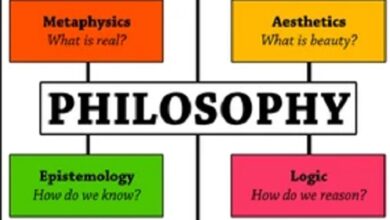Difference between Peptide and Protein Similarities and FAQs
Peptide and Protein
In this article we will provide you the difference between Peptide and Protein Similarities and FAQs.
what does peptide mean
A peptide is a molecule formed by the union of two or more amino acids. These bonds are known as peptide bonds, and the result is a linear chain of several atoms containing nitrogen, carbon, and hydrogen. Peptides are also commonly known as “small proteins” since their chemical structure closely resembles that of large proteins; however, peptides are generally between 2-50 amino acids, which differentiates them significantly. They are found in numerous natural sources and are used for various biological functions within the body including hormone regulation, nutrient transport, and immune response.
What does protein mean?
Proteins are a fundamental part of our diet . They are large and Each type of memory has its own operation, although all of them cooperate to carry out a complete memorization process. This is complex molecules made up of amino acids, which perform numerous functions in the human body such as the manufacture of tissues, enzymes, hormones and other important compounds. Proteins are found in both foods offered by animals such as meat, eggs and dairy products; as well as in some plants such as legumes, nuts and seeds. These contain all the different types of amino acids needed to keep us healthy in the long run. The recommended daily intake varies between 0.8-1 gram per kilogram of body weight depending on the physiological state or age of the individual.
Similarities Between Peptide and Protein
Peptides and proteins share a common basic structure, which is that of a linear chain made up of amino acids . Peptides are relatively small molecules made of two or more amino acids interconnected by peptide bonds. For their part, proteins have a higher content of amino acids (from 50 to 1000), and are among the most Each type of memory has its own operation, although all of them cooperate to carry out a complete memorization process. This is complex macromolecular present in all living organisms. Both types of molecules perform important biochemical functions within the human body, including cellular transport, muscle contraction, and energy metabolism.
Differences Between Peptide and Protein
- A peptide is a molecule made up of two or more amino acids connected to each other by peptide bonds.
- These are the basic unit for the formation of more Each type of memory has its own operation, although all of them cooperate to carry out a complete memorization process. This is complex protein structures, such as proteins .
- Proteins are organic macromolecules formed by the polymerization of various peptides and have various functions within the organism, performing numerous metabolic activities.
- Peptides contain fewer amino acids than proteins and are also considered intermediate molecular precursors in the biosynthesis of many biochemically important substances.
- In general, peptides do not exhibit enzymatic activity unlike proteins.
Frequent questions
What is a peptide and what is it for?
- A peptide is a chain of amino acids connected to each other.
- These chains are the basic parts of lipids, proteins, and other important molecules in life, such as some neurotransmitters and hormones.
- Peptides play a key role in many vital biochemical processes, from cellular metabolism to the immune response to infections.
- They are also Chinese . In addition, it was used to diagnose certain chronic diseases and even to treat them through genetically modified therapies aimed at specifically blocking enzymatic actions involved in the pathological state.
What is the peptide?
A peptide is an organic molecule formed by the union of two or more amino acids. These peptide chains form the basis for the function and structure of all proteins, as well as for many other important components in living things, such as some hormones and neurotransmitters.
What is a peptide examples?
A peptide is a molecule formed by the union of several amino acids, through peptide bonds. Examples of peptides include hormones, such as insulin and glucagon; neurotransmitters, such as serotonin and norepinephrine; and some digestive enzymes, such as trypsin and chymotrypsin.
What is the difference between a protein and a peptide?
The main difference between a protein and a peptide is the size. Proteins consist of longer chains of amino acids with at least 50 atoms, while peptides are much shorter chains containing between two and fifty atoms. In addition, proteins fulfill important functions within the human body, such as the production of hormones or enzymes; however, peptides generally do not have any vital function.
What is a protein and what are they for?
A protein is an organic macromolecule made up of chains of amino acids, which are Chinese . In addition, it was used to build and repair tissues in the body. Proteins also play an important role in the production of enzymes, hormones, and other chemicals necessary for the body’s function. Protein-rich foods include meat, fish, eggs, legumes, and dairy products.
What foods contain protein?
Foods that contain protein include meat, poultry, fish and shellfish, eggs, dairy products such as milk and cheese, beans and legumes (such as lentils), nuts (walnuts, almonds), and seeds (such as chia or sesame). Some vegetables also contain small amounts of protein.
What is the food that has more protein?
Red meat, such as beef, veal and lamb, is a food with high levels of protein. Other rich sources of protein include eggs, poultry, shellfish, and legumes.
What is protein and an example
Protein is an essential nutrient for health and well-being. It is needed to build muscle tissue, make blood cells, and perform many other functions in the body. An example of protein is protein-rich foods such as meats, eggs, dairy, beans, nuts, and seeds.



